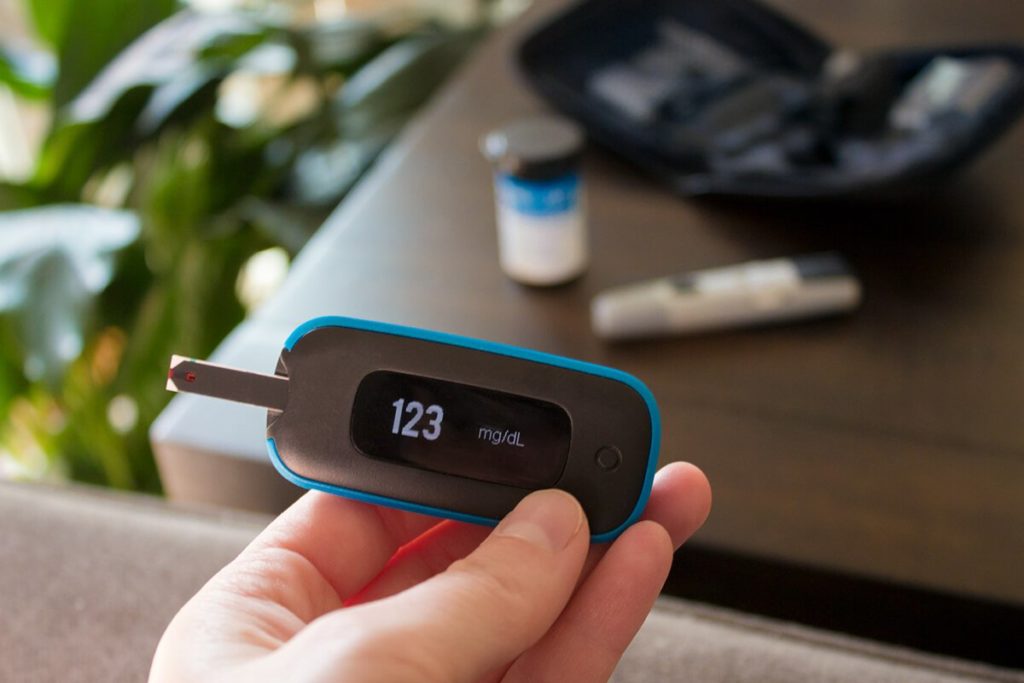This information is part of the American Diabetes Association’s Living With Type 2 Diabetes Program. To sign up, visit diabetes.org/LWT2D.
Before you had diabetes, your body was able to regulate itself. It didn’t matter what you ate or if you exercised. But with diabetes, your blood glucose (blood sugar) can be high or low. The food you eat, your physical activity, your medicines, and many other factors can cause your blood glucose to be higher or lower than your target range. It is important to try and keep your blood glucose in your target range to stay healthy and help prevent other health issues with your heart, feet, kidneys, and eyes.
Your diabetes care team will help you to set the target range for your blood glucose.
Managing high and low blood glucose
Many things can affect your blood glucose. Learning these things can help you manage your blood glucose.
Hyperglycemia (high blood glucose) happens when there is too much glucose (sugar) in your blood. Hypoglycemia (low blood glucose) is when your blood glucose levels go too low. This is usually less than 70 mg/dL on a meter. However, talk to your doctor about your own blood glucose targets and what is too low for you.
What are the causes of hyperglycemia?
Missing a dose of medicine
Eating more than usual
Exercising less than usual
Being stressed by being sick with a cold or the flu
Feeling stressed because of family conflicts, work, or other problems
What are the signs and symptoms of high blood glucose?
A blood glucose reading above your target range on a blood glucose meter
Frequent urination
Increased thirst
Blurry vision
Fatigue or unusual tiredness
Talk with your doctor about what to do when your blood glucose is too high. Drink water to stay hydrated, and take your medicine as your doctor prescribed. Make a note in your blood glucose log if your blood glucose is high, and write down what you think may have caused it.
If your blood glucose is often high, it might help to talk with a dietitian about your meal plan. If exercise and changes in your meal plan don’t help, talk to your doctor. Sometimes high blood glucose is a sign that a change in your medicine may be needed.
What are the causes of hypoglycemia?
Certain diabetes medicines, such as insulin or medicines that cause your pancreas to release insulin (such as glyburide, glipizide, or glimepiride)
More physical activity than usual
Less food than usual
Know your lows
Each person’s reaction to low blood glucose is different. Learn the signs and symptoms that tell you that your blood glucose is low, and talk to the people close to you about your signs and symptoms. Low blood glucose may happen quickly.
What are the signs and symptoms of low blood glucose?
Feeling shaky
Being nervous or anxious
Sweating, chills, clamminess
Mood swings, irritability, or impatience
Confusion
Fast heart beat
Feeling lightheaded or dizzy
Hunger or nausea
Feeling sleepy
Feeling weak, having no energy
Blurred/impaired vision
Tingling or numbness in lips, tongue, or cheeks
Headaches
Coordination problems, clumsiness
Nightmares or crying out when sleeping
Seizures
What to do if you have these symptoms
If you think you have hypoglycemia, follow the “15-15 rule”:
Check your blood glucose.
If your reading is 70 mg/dL or lower, have 15-20 grams of carbohydrate to raise your blood glucose. This may be:
4 glucose tablets (4 grams per tablet), or
1 glucose gel tube (15 grams per gel tube), or
4 ounces (1/2 cup) of juice or regular soda (not diet), or
1 tablespoon of sugar, honey, or corn syrup
Check your blood glucose again after 15 minutes. If it is still below 70 mg/dL, have another serving of 15 grams of carbohydrate.
Repeat these steps every 15 minutes until your blood glucose is at least 70 mg/dL.
Make a note in your log book anytime you have low blood glucose, and talk with your diabetes care team about why it happened. They can tell you ways to avoid low blood glucose in the future.
When should you check your blood glucose?
Your doctor may ask you to check your blood glucose at certain times each day for several days, and to bring the readings to the office. This is important so your doctor can understand how daily things like your meals, exercise, and medicines make your blood glucose go up and down. This information will help you and your doctor decide on the best treatment plan.
Common times to check blood glucose include:
First thing in the morning. Checking your blood glucose before you eat or drink in the morning is called your “fasting blood glucose.”
Right before you go to bed. Be sure to write down the last time you ate.
Middle of the night. Checking your blood glucose in the middle of the night can help you and your doctor see how your medicine is working.
Sometimes you might want to check in pairs:
Check your blood glucose before and 2 hours after a meal to learn how that meal changed your numbers. Different types of foods will cause different results.
Check at bedtime and then first thing in the morning (before you eat or drink) to learn how your medicine is working.
Check before and after exercise to see how different types of activity change your blood glucose levels.
Track your blood glucose by writing down your numbers. This can help you learn how different things affect your blood glucose, such as medicine, exercise, and food. You can use an app to record your results, or you can use a pen and paper to write them down.
Write the date and the time that you checked. Add notes about the things that might have made your blood glucose go up or down. Remember, tracking your blood glucose is an important tool to help you and your doctor.
